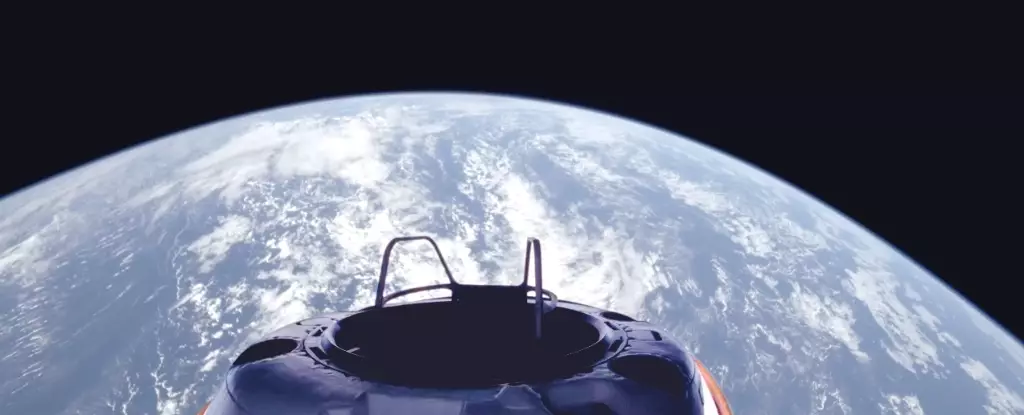Embarking on a groundbreaking orbital journey, a private crew launched into space on Tuesday for an audacious expedition that will take them deeper into the cosmos than any humans have ventured in the past 50 years. Led by Shift4 Payments CEO Jared Isaacman, the SpaceX Polaris Dawn mission marks a significant milestone as they prepare for the first ever spacewalk by non-professional astronauts. The crew departed from the Kennedy Space Center in Florida, aiming to reach a peak altitude of 870 miles (1,400 kilometers) by the end of their first day in space. This distance is nearly three times farther from Earth than the International Space Station, pushing the boundaries of human space exploration.
As the crew navigates through the hazardous and high-radiation Van Allen belt during their roughly five-day trek, they will encounter a series of challenges. Apart from radiation, the four-member team onboard the Crew Dragon spaceship will need to maneuver through orbital altitudes crowded with over 10 thousand satellites and space debris. SpaceX founder and CEO Elon Musk highlighted the precision required in their calculations, emphasizing that there is no room for error in their navigational efforts. The Falcon 9 rocket will propel the Dragon spacecraft to an elliptical orbit before raising it to an apogee of 1,400 km, marking the highest point that humans have traveled in Earth’s orbit since the Apollo program over five decades ago.
The climax of the Polaris Dawn mission is scheduled for as early as Thursday, when civilians onboard will conduct the first ever spacewalk. Equipped with advanced SpaceX extravehicular activity (EVA) suits featuring heads-up displays, helmet cameras, and mobility systems, the crew will venture into the vacuum of space for an unprecedented experience. Despite the lack of an airlock on the Crew Dragon capsule, two crewmates will undertake the spacewalk, spending around two hours total outside the spacecraft with each member taking turns for 15 to 20 minutes. The crew’s primary objectives include collecting data on decompression sickness and studying the health effects of the Van Allen radiation belt, providing valuable insights for future space missions.
Astronauts of Tomorrow
The Polaris Dawn crew comprises visionary individuals who have undergone rigorous training for this historic mission. Alongside Jared Isaacman, mission pilot Scott Poteet, mission specialist Sarah Gillis, and mission specialist and medical officer Anna Menon bring a diverse set of skills and expertise to the team. Having invested years in preparation, including simulated missions, skydiving, centrifuge training, scuba diving, and even summiting an Ecuadoran volcano, the crew is well-prepared for the challenges that lie ahead. Isaacman’s commitment to pushing the boundaries of space exploration is evident through his collaboration with SpaceX on the Polaris program, which aims to pave the way for future crewed missions to Mars using the Starship prototype.
Beyond the spacewalk and scientific experiments planned for the mission, the crew will also test laser-based satellite communications between the spacecraft and Starlink’s satellite constellation. This initiative seeks to improve space communication speeds and enhance connectivity for future space missions. Additionally, the crew will conduct 36 scientific experiments, including research on contact lenses with embedded microelectronics to monitor changes in eye pressure and shape. These experiments contribute to a growing body of knowledge aimed at advancing human exploration beyond Earth and laying the groundwork for future breakthroughs in space travel.
As the Polaris Dawn mission unfolds, it symbolizes a new era in space exploration, where private individuals collaborate with industry leaders to push the boundaries of human knowledge and capability. With each milestone achieved, the crew redefines what is possible and inspires future generations to reach for the stars.


Leave a Reply